Htamanè
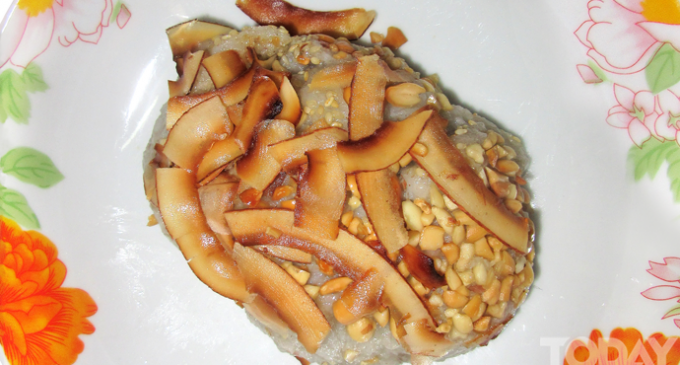
Visitors who havebeen to Myanmar concede that the cold season is the best time to plan vacation in this sublime land of the Pagodas. This season, winter by common parlance, falls between November and February. The weather is nice, crisp and cool throughout the country, ranging from 30° Celcius to 10° Celcius. The hilly regions to the north and the east however fare far worse, where the barometer dips down to zero or even minus Celcius at times.
The eleventh month of the Myanmar lunar calendar is especially significant because it is the peak of the cold season, where the lore goes, that the tips of the partrician Saddan white elephant’s tusks and the common buffalo’s horn shiver in cold.
Two notable festivals are celebrated this month, “Tabodwe” as Myanmars call it. ‘February’ as the Occidentals know it. One is the bonfire festival, kindled to offer warmth to Lord Buddha, the Self-Enlightened One two thousand five hundred years ago. In commemoration, this festival is held annually this august month, and bonfires are lit in reverence to Lord Buddha’s images and relics to this day.
The second no less notable festival is called the Htamane Festival, the ceremonial preparation of Myanmar’s traditional delicacy, lending special credence only in this month, and especially on the 14th waxing and the full moon day of Tabodwe.
 Someone new to Myanmar, the nation, its culture and people will notice that native food does not only satisfy the appetite and offer nourishment, but also has medicinal value, taking due account to the vagaries of the three seasons. A Myanmar believes that every herb, leaf, roof, tuber, fruit has medicinal potency, giving rise to the epigram, ‘food is medicine, medicine is food’. Treatises on traditional medicine ‘Myanmar Pharmacopeia’ mentions that Htamane should be taken in this month, as preventive medicine to generate warmth in the body to combat the inclemency of the biting cold weather. A Htamane party is also an occasion for social interaction, where one and all lend a helping hand in the preparation and feasting of this delicious delight.
Someone new to Myanmar, the nation, its culture and people will notice that native food does not only satisfy the appetite and offer nourishment, but also has medicinal value, taking due account to the vagaries of the three seasons. A Myanmar believes that every herb, leaf, roof, tuber, fruit has medicinal potency, giving rise to the epigram, ‘food is medicine, medicine is food’. Treatises on traditional medicine ‘Myanmar Pharmacopeia’ mentions that Htamane should be taken in this month, as preventive medicine to generate warmth in the body to combat the inclemency of the biting cold weather. A Htamane party is also an occasion for social interaction, where one and all lend a helping hand in the preparation and feasting of this delicious delight.
There are many recipes for making this Htamane “the food of the month.” One interesting literary trait of the Myanmar people is their penchant for versification, which forms a major characteristic in Myanmr literature. naturally such rhyming verses, by virtue of its musical resonance can be easily memorized, where ever theme, subject or occasion offers rich material for a play a talent. The original recipe for preparing this Htamane or glutinous delicacy is also rendered in a form of verse ‘Tay Htat,’ by a bygone poet. Here is a free translation by well-known writer, historian, orator Dr. Khin Maung Nyunt in one of his articles on the subject. To quote:
“Take 4 pyi basket measure of nice glu-tinous rice and wash it clean with fresh water. Put one viss of pure sesamum oil in a big iron pan which is placed on wood fire. Fry 3 tical weight of ginger slices in the oil to produce flavored oil and stir it thoroughly. Add some water to it and knead with wooden ladles. When the glutinous rice gets grilled, with oil oozing out of it, reduce the fire and spray on to the stuff in the pan 80 tical weight of fried groundnut, 32 tical weight of roasted sesamum seeds, 20 tical weight of salt. Then knead and crush the stuff again and again. Taste it to test if it has attained the required quality. Then the Htamane it put on banana leaves for serving with plain tea.”
A run-of-the-mill recipe from the cook-book “500 kinds of cooking by Oo Kyi Pu” states matter-of-factly as follows:
Ingredients
- 4 pyi measure of premiere quality white glutinous rice
- cooking oil (sesamum or pea-nut) one viss approximately
- dehusked roasted peanuts (about 6 condensed milk tin measures)
- ginger 5 ticals
- salt 5 ticals
- coconut 2 numbers
Preparation
Choose a spacious open outdoor area and kindle a fire either with firewood or charcoal. Put a wide-rimmed iron bowl on the fire. Pour oil in the pan till hot. Then put pounded ginger till fired to fragrance. Then put washed and sieved glutinous rice in the pan and stir with long-handled wooden ladles and pour warm water to rise up to 3 inches above the preparation. Then cover with a wooden cover and let it boil. When the water dries up and the glutinous rice cooked to required texture, mash it becomes a finely doughed mass. Then add peanuts, sesamum seed, with grated coconut kernels sprinkled to heighten the taste. Serve to one’s content.”
I have referred now and again that festivals abound all the year round in the land of warmth, mirth and honey, and naturally the Htamane festival provides a fitting raison d’etre for a social meet. The venue naturally is where there is ample open space, viz “precincts of the sacred pagodas or temples, spacious compound of the monastery where the holy patriarch presides, or even in the communal football ground. An informal working committee is organized from among the ward or village residents : elders, youths, damsels all included, each assigned with a certain specific task. Practical management ; planning, directing, organizing, control, follow-up, and leadership, verily a fitting display of simple management skills are evident, may be putting the management pundits, Fayol, Gilbreth, Taylor, and Tom Peters to wonder. For these simple folks may have read none of their haloed dicta, but work on what comes, born of experience and common sense. Essential means of production, kitchen utensils, viz : giant wide-rimmed iron bowl, long wooden handled landles, knives, baskets, trays etc are collected, through buying, hiring, snatching by all means from all available sources, principally from the monastery where sufficient quantity is stored for such use.
The cooking is done by open fire, so fuel wood is cut and piled for ready use. Water is also fetched from nearby wells, tanks or ponds and stored in giant glazed water cisterns or barrels. Youths and lassies take their share of work in accordance with their capability and proficiency. Oh . . . La La there’s so much to do, washing glutinous rice grains, dehusking groundnut seed, grating succulent coconut kernels, washing pots and pans.
After the preliminaries are over the fire is lighted, and the big bowl put above the makeshift oven propped triangularly with bricks and stone, with fire blazing merrily below. Oil is fried first, then ginger, rice and other ingredients put into the gala preparation under the direction of the master chef.
The second phase comes when the delicacy is cooked to the right texture, soft, pliant, hot and glistening with oil, wafting aroma to make your mouth water. Now is the time for muscular men to take charge of the arduous task of kneading and crushing the rice to an adhesive mass. Two men with long ladles mash the preparation, with a third man guiding the movement. Even in the cold of the night these men sweat profusely due both to heat from fire and intensity of their labour. The womenfolk have their share of duty as they sprinkle the condiments in the delicacy while men toil. When there are more than one team, keen competition follows where contesting parties cheer their teams in the silence of the night as the contest rages on till the Htamane is fully cooked, and the revellers totally exhausted.
The first portion of the delicacy is offered to the image of Lord Buddha to bring auspicious blessings to the universe. Then it is offered to the Holy patriarch and the monks, then it is offered to the elders of the village and ward. The men who contributed their voluntary labour are allowed to take a scoop with their ladles as their share. Then the rest is eaten with relish gulped down with hot plain tea. No special invitation, no RSVP is needed as it is the festival for all, and there is a take-home packet wrapped with green leaves in the bargain.
Welcome to the Htamane festival if not this year, may be the next and more the come. It’s a standing invitation. OK?
Ba Than
./wp-content/uploads/2018/10/Emirate-Online-TDY.png)










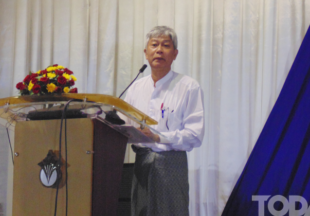




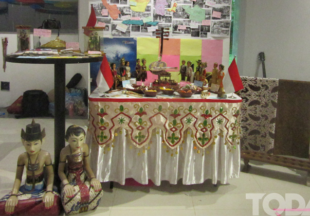

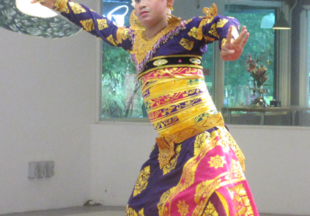

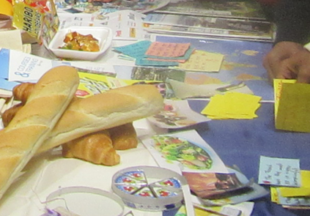













There are no comments at the moment, do you want to add one?
Write a comment